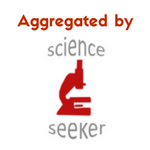Joshua Dierolf (www.joshuadierolf.com) is currently completing his PhD in the lab of Dr. Dean Betts, at Western University, studying the influence of metabolism on stem cell pluripotency and early development. He will be joining Dr. Amy Wong, at the University of Toronto, in the near future.
As Canada’s premier stem cell meeting, the Till & McCulloch Meetings (TMM) need to operate as a well-oiled machine, but never has TMM faced a challenge as menacing as COVID-19. Like so many scheduled events in 2020, TMM moved to an online platform. While our community may have been somewhat dismayed by the lost opportunity to come physically together, share tales of our studies and research exploits, learn new techniques and network with the best and brightest, TMM2020 lived up to and exceeded expectations in many ways.
Perhaps the best outcome from moving to an online setting was the greater availability of renowned experts – something all event organizers can benefit from. As the chair of the Stem Cell Network’s Trainee Communications Committee (SCN TCC) and an opportunistic optimist, TMM2020 was the perfect chance to welcome the international stem cell community to our meeting.
Differentiating your conference and dealing with spontaneous differentiation
This shouldn’t be surprising to anyone, but when switching up a National level conference mid-year to an online format, some hiccups are to be expected. Despite SCN’s best efforts, there were some small bumps in the road. However, there are some lessons to be learned from this!
Lesson 1. Calendar invites are your friend.
Surprisingly, having experts participating from around the world did not result in issues with regards to different time zones – a pleasant and welcome benefit to meticulous Outlook calendar invitations and foresight by the SCN. Now, post-TMM, I find myself frequently making calendar invites for committees, experiments and other reminders.
Lesson 2. Zoom is a tool, not your (my) friend.
Zoom turned out to be a logistical nightmare as participants and experts may not have always logged in with their Zoom authenticated e-mail. A rather strange double participant glitch plagued one session of Meet the Experts resulting in Dr. Helen Blau being blocked from our Zoom call. She was gracious enough to call me and speak to her cohort of trainees through my cell phone’s speaker over Zoom in a somewhat haphazard but thoughtful solution. My own biggest downfall was having essentially zero luck in pre-assigning students to groups, an issue that I still have not fully fathomed after practicing this prior to TMM2020. Tip: For my own future events, I plan on logging in well before all meetings to set up my controls manually.
Lesson 3. A conference is a lot like our research models. If online is ‘in vitro,’ relative to in-person being ‘in vivo,’ then we must make the most of our tools.
Just because your event is online doesn’t mean that you can slack off on the networking. In fact, the majority of trainees that I spoke with used this platform to their advantage! “Meet the Experts” is routinely a favourite component of the TMM experience, where trainees and post-docs alike get the opportunity to enjoy a meal with top notch experts in academia, industry, communication and more. Being online allowed some sessions that would normally end after a short 15-30 minutes to run for an hour and participants were seemingly far less nervous or apprehensive to ask questions of our most prestigious cohort of experts yet, a fortunate biproduct of the online environment.
Additionally, incentives like the chance to win a generous gift card had students “lining up” at virtual booths to speak with representatives. The virtual platform made industry networking far less nerve-wracking and awkward, and when there were technical issues support was always only a click away.
It’s true that some elements of a conference are better in person, but there are some serious benefits.
Question: What could be better than attending TMM in your pajamas?
Answer: Watching leaders in the field share their work anytime from now until December 31 in your pajamas, on the couch, at your own leisure.
For the first time, we have the ability to watch missed sessions, re-watch topics of interest and truly have the opportunity to digest the first rate, magnificent science presented at TMM. Forget Netflix this holiday; instead, enjoy an extra binge watching of stars such as Dr. Christine Mummery talking about heart on a chip research while eating chips, or Dr. Adam Feinberg’s miraculous 3D bioprinting innovations while 3D printing at home (my personal favourite session from this meeting, definitely worth a watch!). There is no doubt in my mind that having the option to watch these talks on demand will greatly increase the amount of future collaborations and excitement in our scientific niche.
A quality conference is only as effective as its participants. With that said, TMM2020 was seemingly destined for great success. Our community is truly second to none and I am so thankful for being a part of this amazing group. Having played a small role in the overall planning and execution of this year’s meeting, I can earnestly say that moving to an online platform is not a simple feat. The trials and tribulations of the SCN in changing course from their original path to Vancouver was nothing less than a battle of its own. A battle that I believe we conquered as a community.
Guest
Latest posts by Guest (see all)
- Regenerative immunotherapy: Hope for chronic autoimmune diseases - September 16, 2025
- Canada’s regenerative revolution: Why AI is the catalyst - September 4, 2025
- Summer by Design: A launchpad for future entrepreneurs and industry scientists - August 14, 2025







Comments